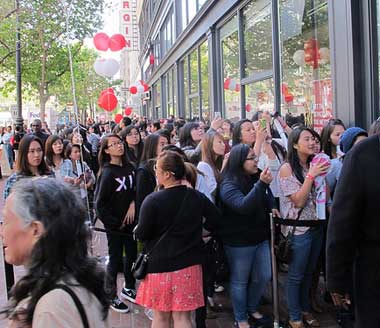Psy Puts South Korea on the Tourists' Map
Trendy, posh and affluent, Gangnam is a popular district in South Korea for its Beverly Hills' lifestyle. This Seoul's postcode is not only the capital's hub for luxury shopping, fancy brunches and cocktails, but is also home to some of South Korea's music agencies, a dashing touch that frosts the area with a "cool", chic and attractive mist.
PSY's K-pop song "Gangnam Style" was inspired in this area while its video –which garnered over a billion views on YouTube and it has become the website's most watched video of all time- was shot in the Gangnam District. While the song tells about singer's lifestyle –who is said to have Gangnam's style-, the music video shows PSY dancing on top of the Asem building with the Trade Tower in the background. Both buildings are part of World Trade Centre Seoul (WTO Seoul), also known as COEX.
The catchy song, the contagious "crossing reins" dance routine, and the explosively spellbinding video that went viral have raised international awareness of the district. Indeed, last year witnessed the origin of a phenomenon known as "Holidays Gangnam Style", as South Korea recorded best year ever for tourism in 2012. Precisely, according to the country's Culture Minister, the Asian country saw some 11.1 million visitors last year, a figure that was up 13.4% on 2011.
Tourists from neighbouring countries like Japan and China were the prevalent visitors. 3.51 million Japanese tourists and over 2.83 million Chinese travellers visited South Korea last year -a rise of 24.7% on the latter figure in comparison with the previous year. According to official projections, more visitors will fly into Seoul this year.
The Korean Tourism Organisation has set up a "Gangnam tour" –a K-Pop-themed tourist attraction- for music lovers wanting to visit the glitzy suburb. The tour will include the opportunity to learn to dance like South Korean star with K-Pop dance academies offering courses in the popular music genre.
There is also a plan to have a monument to Korean pop music on the streets and new square for concerts and performances off the road and in between the pavement will be printed with the handprints of South Korea's biggest pop stars.




